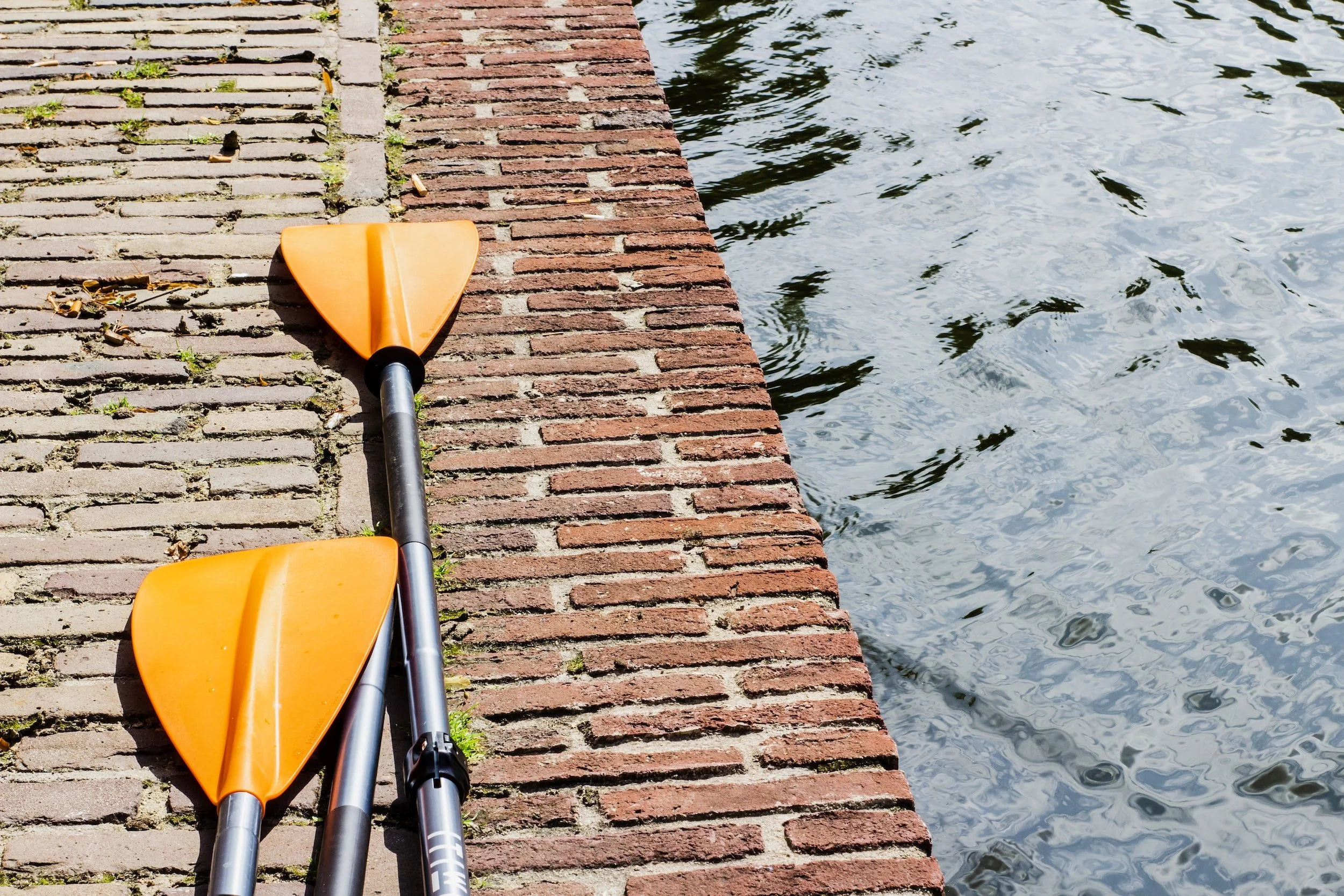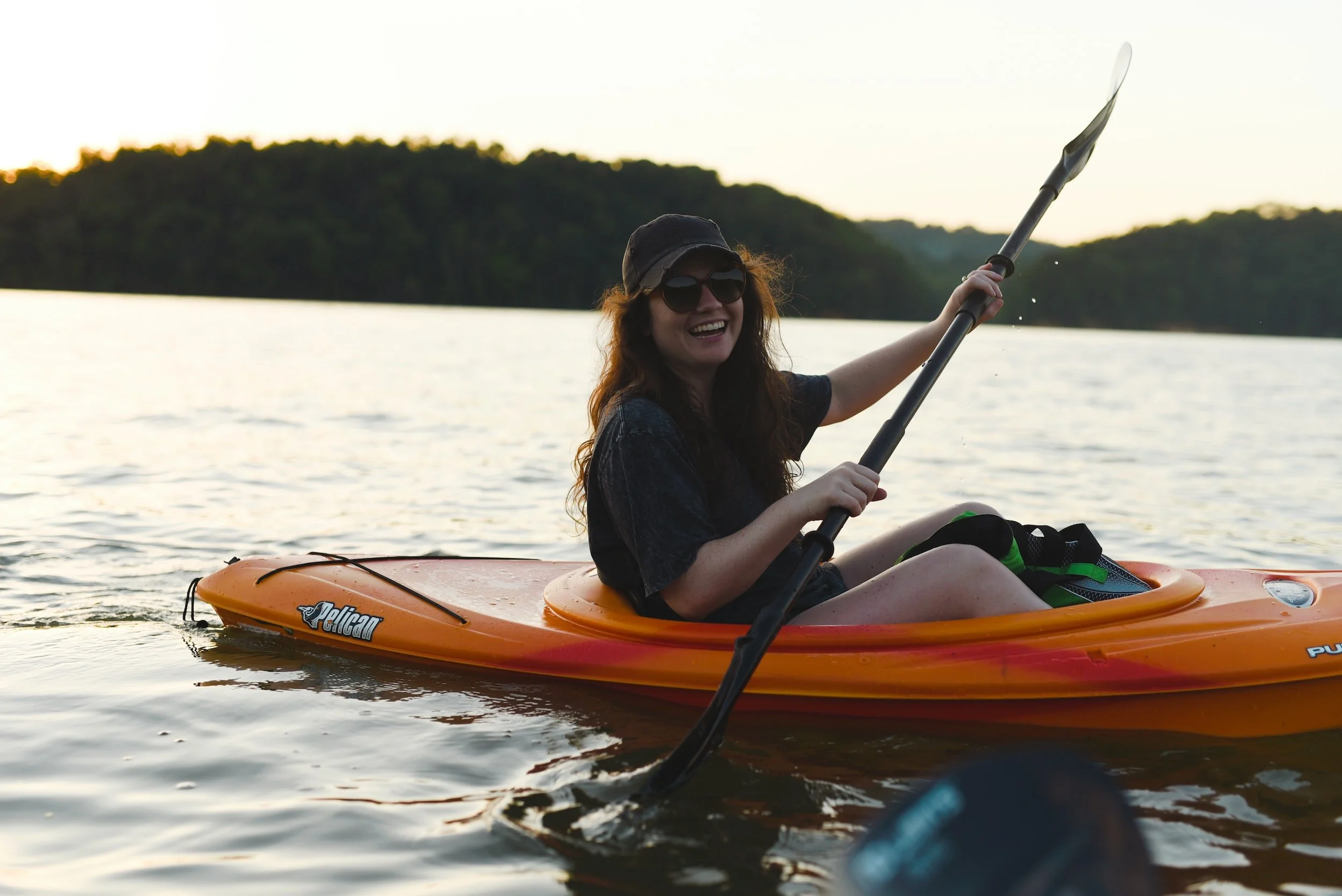Oar vs paddle: 3 key differences you need to know
There's nothing better than spending the day flatwater kayaking and enjoying the unmatched beauty of nature. For beginner recreational kayakers, understanding the different gear can be challenging at first, with many people unsure of the right accessories to match your boating need. One particularly common mistake is with the paddle, which is often confused for an oar.
Let's take a closer look at the key differences you need to know between a paddle vs. oar so that you can start your kayak journey like a pro!
Just a heads-up, this post contains affiliate links that at no additional cost to you, we may earn a small commission.
The parts of oars and paddles
Notice the shape of the oars in this photo and how the rower is using them to paddle through the water.
While they may appear similar at first when you look at them, paddles and oars are actually very different.
Oars are mounted directly onto the boat and contain a single blade and propel the craft in the opposite direction of the rower, giving the feeling of traveling backward.
Oars consist of five parts, including:
Blade
Handle
Collar
Shaft
Sleeve
Compare the above photo with this one, which shows the shape and material of a newer model Oru kayak paddle.
Paddles can be either single or double-bladed and do not attach to the boat. These are the accessories used for kayakers.
The rower uses forward strokes, alternating sides and propelling the craft in the same direction as they are facing.
Paddles are made of four parts:
Blade
Grip
Throat
Shaft
3 key differences between oars and paddles
See how the oars are mounted to the water vessel, which is a key difference from a paddle.
Vessel and mounting
Oars mount directly to the vessel, with oarlocks fixing them into place. The boat plays a major role, supporting the oar and acting like a fulcrum during rowing motions.
Paddles are completely independent of the vessel and are held by the rower. Since they are not attached, paddles provide greater flexibility of motion but run the risk of falling into the water if unattended.
2. Shape and materials
Oars have only a single blade, while paddles can come in either a single or double-blade. Paddles may be shorter and lighter than oars and are made from fiberglass, carbon fiber, or aluminum materials.
Compare that to oars which are typically made from hardwood and significantly heavier, and it's clear to see their physical differences.
3. Strokes, hand positioning, direction & speed
This photo shows a recreational kayaker on calm water.
One of the main differences between paddles and oars becomes clear with use. When paddling, you use both hands to hold the paddle, using forward to rear strokes, alternating sides of the kayak with every stroke.
On the other hand, when using an oar, you must have one on either side of the boat, using one hand on each. The rower uses rear-to-forward strokes, propelling the boat forward while sitting "backward."
Paddles generally allow for faster speeds thanks to the greater flexibility of movement, but oars can still perform well in calm water conditions.
Flatwater kayakers require a paddle to navigate the waters and get the most out of their outdoor adventure.
Summary
While the terminology can be confusing at first, understanding the differences between paddles and oars is essential to becoming an expert kayaker.
With time and experience, you will become well-versed in the different aspects required for proficiency in flatwater kayaking, including the correct gear, terminology, and techniques, allowing you to become a master of your craft!
Learn more about recreational kayaking in our free library of resources at Flatwater Kayak Club:
What are the physical and mental health benefits of kayaking?
How to choose a kayak that’s right for you
Where can beginner kayakers rent a kayak in Oregon and Washington?









![Are Ombraz armless sunglasses worth the hype? [REVIEW]](https://images.squarespace-cdn.com/content/v1/62c5c6be9225615a8d0231a9/a5eb2fe8-d50d-4afc-bda9-a5a5bb3031c8/ombraz-sunglasses-flatwaterkayakclub-review.jpeg)
![Oru kayak gel seat vs Oru seat wedge [TEST]](https://images.squarespace-cdn.com/content/v1/62c5c6be9225615a8d0231a9/23d13120-cde7-4963-b895-700bc9feade6/OruKayakGelSeat-RegularSeat-FlatwaterKayakClub.jpeg)
Learn about the new Oru Inlet Sport kayak design, see photos and videos from testing, and read how the features stack up against the Oru Inlet model.